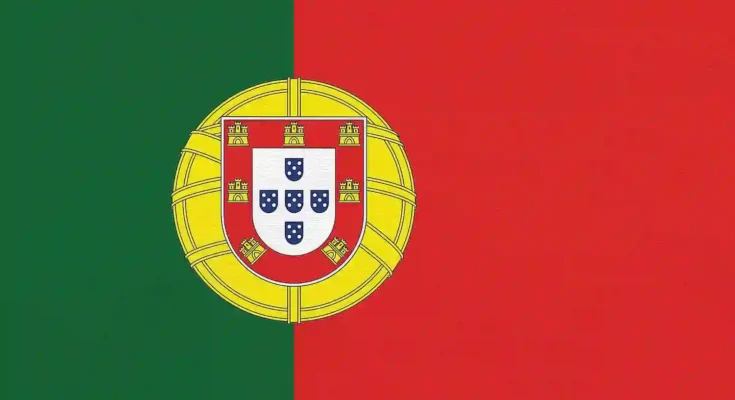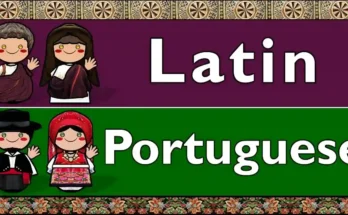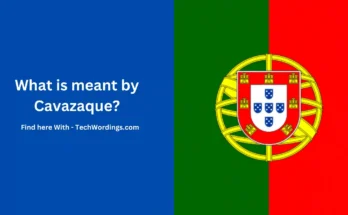In the vast tapestry of language, certain words carry an elusive beauty, a rhythmic resonance that transcends mere definition. One such word is “pulsamento.” While it may not be a household term, its significance extends far beyond its linguistic confines. Join us on a journey as we unravel the layers of meaning behind “pulsamento” and delve into its diverse applications.
Why Pulsamento Matters:
At first glance, “pulsamento” might seem confined to the realms of anatomy or physics, but its versatility allows it to bridge the tangible and the abstract. From the steady throb of a heartbeat to the celestial pulsation of distant stars, and the rhythmic beats within a piece of music, “pulsamento” encapsulates a spectrum of experiences.
This article aims to not only define the term but also to explore its multifaceted nature, demonstrating how it weaves through the fabric of our lives, from the biological to the metaphorical. Let’s embark on this linguistic exploration, peeling back the layers of “pulsamento” to reveal the heartbeat that echoes through various aspects of our existence.
The Verb “Pulsar”
At its core, “pulsar” is a verb that encapsulates a rich tapestry of sensations. It goes beyond a mere mechanical action, encompassing the pulsation, throbbing, beating, and vibrating that resonate through various aspects of existence. This verb breathes life into the inanimate, giving rise to a vivid symphony of movements.
Various Contexts of Usage
1. Physical Actions: “Pulsar” finds its roots in the physical realm, describing actions that are as primal as the human heartbeat. Whether it’s the rhythmic pulsation of a heart after a sprint, the steady throb of a distant star, or the waves crashing against the shore, this verb paints vivid images of the world in motion.
2. Emotions: Beyond the physical, “pulsar” extends its reach into the realm of emotions. It becomes a linguistic vessel for expressing the dynamic nature of feelings—be it the excitement of an upcoming event, the anticipation of a significant moment, or the tension that hangs in the air before a revelation.
3. Sounds: In the auditory realm, “pulsar” manifests as the rhythmic beats that define our sonic experiences. Picture the pulsation of music, where each note reverberates in harmony, creating a symphony that resonates with the soul. It also describes the rhythmic cadence of footsteps or the hypnotic sound of raindrops tapping against the window.
4. Figurative Language: In the realm of figurative language, “pulsar” becomes a potent tool for writers and speakers. It adds emphasis and dynamism to metaphors, similes, and personification, breathing life into descriptions. A narrative pulses with energy when “pulsar” is woven into its fabric, creating a vivid and engaging experience for the audience.
Examples Illustrating Each Context
Physical Actions: “O coração do atleta pulsava com força após a corrida.”
(Translation: The athlete’s heart pulsed with strength after the race.)
Emotions: “A expectativa pulsava no ar antes do anúncio importante.”
(Translation: Anticipation pulsed in the air before the significant announcement.)
Sounds: “A música tinha um pulsamento contagiante que fez todos dançarem.”
(Translation: The music had a contagious rhythm that made everyone dance.)
Figurative Language: “O pulsar das folhas ao vento narrava histórias de tempos passados.”
(Translation: The pulsation of leaves in the wind narrated stories of times gone by.)
The Noun “Pulsamento”
As we transition from the dynamic verb “pulsar,” we encounter its noun counterpart, “pulsamento.” This term encapsulates the essence of pulsation, vibration, and rhythm, transforming an action into a tangible and meaningful entity. In its noun form, “pulsamento” represents not just a physical occurrence but an artful expression of life’s rhythm.
Relationship to the Verb “Pulsar”
“Pulsamento” stands as the noun embodiment of the verb “pulsar.” It serves as a container for the pulsating actions described by its verb counterpart, allowing us to conceptualize and explore the broader implications of rhythmic phenomena. While “pulsar” captures the act, “pulsamento” freezes that moment, preserving it as a noun.
Examples Showcasing Pulsamento in Action
1- “O pulsamento das estrelas iluminava a noite escura.”
(Translation: The pulsation of the stars illuminated the night.)
2- “A batida constante das ondas era um pulsamento calmante para os ouvidos.”
(Translation: The constant beat of the waves was a soothing pulsation for the ears.)
In these examples, “pulsamento” transcends being a mere grammatical construct; it becomes a vessel for capturing the rhythm inherent in both the cosmic and the earthly realms. As we explore further, we’ll unveil the diverse applications of “pulsamento” in different scenarios, from the biological to the artistic.
Applications and Metaphors of pulsamento
Pulsamento in Different Scenarios
1. Biological: “Pulsamento” finds its most literal application in the biological realm, depicting the rhythmic beating of the heart. The heart’s pulsation, a life-sustaining cadence, serves as a poignant reminder of our connection to the fundamental pulse of existence. It’s the symphony that orchestrates the dance of life within us.
2. Celestial: Venturing beyond the confines of our bodies, “pulsamento” extends its reach to the celestial stage. The pulsation of stars, like cosmic heartbeats, offers a glimpse into the vastness of the universe. It paints a picture of celestial bodies pulsating in a rhythm that echoes through the cosmos, connecting the microcosm to the macrocosm.
3. Artistic: In the realm of art, “pulsamento” takes on a vibrant role. It describes the rhythmic heartbeat of music, where notes and beats weave together to create a sonic masterpiece. The pulsation of music becomes a universal language, stirring emotions and transcending cultural boundaries. Whether it’s the steady throb of a drum or the delicate pulsation of a melody, the term captures the essence of artistic expression.
Figurative Use in Describing Natural Phenomena
1. Changing Seasons: “Pulsamento” serves as a metaphor for the changing seasons, where nature undergoes rhythmic transformations. The pulse of spring, the steady beat of summer, the ebb and flow of autumn, and the quiet pulse of winter—all become part of the Earth’s pulsamento, illustrating the cyclical nature of life.
2. Flow of Time: As time flows ceaselessly, “pulsamento” can be employed metaphorically to describe its rhythm. The ticking of a clock, the beating of a heart, and the rhythmic passage of days—all contribute to the pulsamento of time. This metaphorical usage brings a poetic dimension to our perception of time’s relentless march.
Figurative and Cultural Significance of pulsamento
Pulsamento in Literature and Art
In the realms of literature and art, “pulsamento” takes on a symbolic role, infusing creative works with vitality and emotion. Writers and artists harness the power of pulsamento to convey a sense of life, energy, and movement in their creations. Descriptions come alive with the pulsating rhythm, painting vivid imagery that resonates with readers and viewers.
Example: “As palavras dançavam no papel, seguindo o pulsamento de uma melodia literária.”
(Translation: The words danced on the paper, following the pulsation of a literary melody.)
This metaphorical use of pulsamento enriches the sensory experience of the audience, creating a dynamic connection between the creator’s expression and the observer’s perception.
Cultural Expressions and Symbolism
Within various cultures, pulsamento can carry nuanced meanings and symbolisms. It becomes a thread woven into the fabric of traditions, rituals, and expressions.
Example: “Os tambores ecoavam, marcando o pulsamento do ritual ancestral.”
(Translation: The drums echoed, marking the pulsation of the ancestral ritual.)
In cultural practices, pulsamento might symbolize unity, life, or the cyclical nature of existence. Its incorporation into ceremonies and celebrations underscores the cultural significance of rhythmic patterns as a reflection of shared experiences and communal identity.
Pronunciation and Regional Variances
The pronunciation of “pulsamento” may vary slightly based on regional influences. While the general pronunciation is “pool-sah-MEN-toh,” nuances may arise in different Portuguese-speaking communities. These variations contribute to the rich tapestry of linguistic diversity, emphasizing the dynamic nature of language itself.
Pronunciation and Regional Variances of pulsamento
Exploring How “Pulsamento” is Pronounced
In the linguistic symphony of Portuguese, the pronunciation of “pulsamento” adds another layer to its rhythmic essence. While the general pronunciation follows the pattern of “pool-sah-MEN-toh,” it’s essential to note the nuanced tones and cadences that speakers bring to the term. The subtle variations in pronunciation contribute to the melodic diversity of the Portuguese language.
Regional Differences in Pronunciation
As Portuguese is spoken across a myriad of regions, each with its linguistic influences and accents, “pulsamento” may undergo slight variations in pronunciation. The rhythm of the term might dance to different beats in Brazil, Portugal, or other Portuguese-speaking communities. These regional differences serve as markers of cultural identity, enriching the linguistic landscape with unique tonalities.
Example: In Brazil, the pronunciation might lean towards “pool-sah-MEN-too,” with a softer emphasis on the final syllable. In Portugal, it might carry a crisper enunciation, closer to “pool-sah-MEN-tu.”
Understanding these regional variances not only enhances linguistic appreciation but also highlights the living, evolving nature of language within diverse communities.
Conclusion
As we reach the culmination of our journey through the intricate landscape of “Pulsamento,” we find ourselves standing at the crossroads of language, culture, and human experience. What began as a word—a verb, a noun—unfolded into a tapestry of meanings, applications, and cultural resonances.
“Pulsamento” is more than a linguistic curiosity; it is a gateway to understanding the rhythm that courses through life itself. In exploring the verb “pulsar,” we discovered its ability to animate the physical, express the emotional, and narrate the sonic. Each pulsation became a heartbeat echoing the vibrancy of existence.
The noun form, “pulsamento,” emerged as a container for these pulsations, freezing them in time and allowing us to witness the essence of rhythm. It encapsulates the heartbeat of stars, the cadence of music, and the pulse of life in various forms.
Applications and metaphors took us on a journey from the biological heartbeat to the celestial rhythms, and from the artistic pulsation of music to the metaphorical pulse of changing seasons and the relentless flow of time.
In literature and art, pulsamento became a tool for creators to infuse their works with life, energy, and emotion. It symbolizes more than just a beat—it symbolizes the very pulse of creativity and expression.
Culturally, “pulsamento” found its place in rituals and celebrations, embodying shared experiences and communal identity. Pronunciation, with its regional variances, added another layer to the melodic richness of the Portuguese language.
In the end, “Pulsamento Unveiled” is an invitation to appreciate the subtle heartbeat of language, to recognize the rhythm that permeates our stories, celebrations, and expressions. It’s a reminder that beyond definitions and grammar, words have a life of their own—a pulsating, vibrant life that connects us all.
So, let us carry this newfound understanding of “pulsamento” with us, allowing it to echo in our thoughts, resonate in our conversations, and pulsate in the very heartbeat of our shared human experience.



